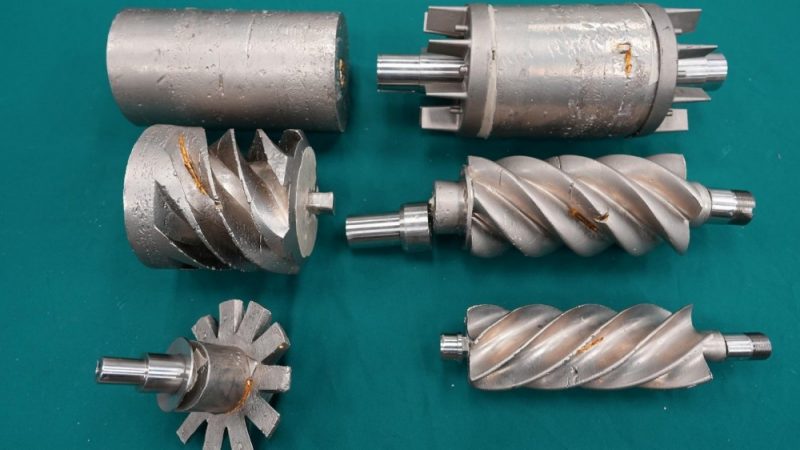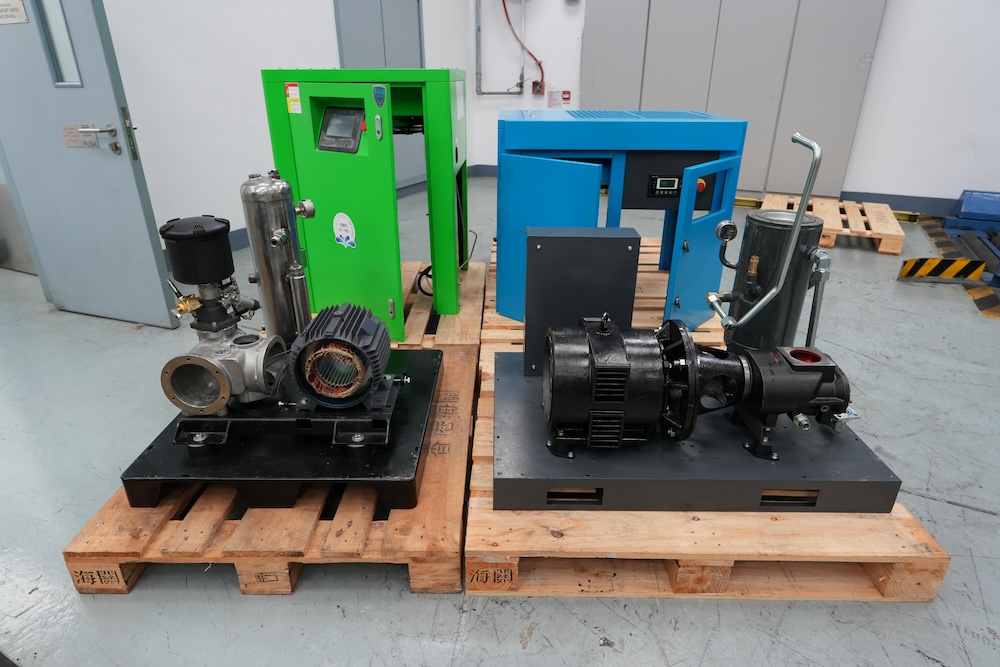Smugglers melted and spray painted $10 million in gold to look like machine parts

It could have been the perfect crime, had they used better spray paint.
Recently, authorities have seized over 320 lbs worth of suspected smuggled gold during a cargo freight search at Hong Kong International Airport, according to yesterday’s customs announcement. Bound for Tokyo on March 27, investigators recovered the roughly $10.7 million haul from within two actual air compressors, the bureau’s largest ever in terms of overall gold value. But these weren’t goldbond bricks or stacks of doubloons stashed deep within the machinery—they were hunks of precious metal molded into the shapes of compressor parts, then camouflaged with silver-colored spray paint.
Customs agents first noticed something suspicious after running the 1,708 lbs pair of air compressors through a security X-ray late last month during a standard screening process. As Business Insider explains, similar air compressors are made from aluminum or iron, and usually intended for industrial and mining projects, as well as to fill divers’ gas cylinders.

Speaking with the South China Morning Post (SCMP) on Monday, the assistant superintendent of Hong Kong International Airport’s customs air cargo division said technicians removed the motor casing and found a rotor “wrapped in a cord wheel which was tied to tape.”
“It was not similar to a normal motor,” he added.
After examining the rotor, authorities found traces of glue at both ends of the machinery part. Using a hammer, they then tapped the part and “noticed unevenness,” indicating the metal was far more malleable than it should have been. Scraping away at an outer layer of silver paint showed flecks of gold. At that point, the whole situation was pretty clear—these were dummy parts made of precious metal. Authorities believe the air compressor scheme was an attempt to evade Japan’s precious metals tariff that would have cost smugglers around $1.07 million, were they to go through official channels.
To create their industrial decoys, authorities believe smugglers must have first melted their gold down before pouring it into molds shaped to resemble motor rotors, screw shafts, and a gear piece. This probably was no easy feat, given that gold’s melting point is 1,948 degrees Fahrenheit.
According to Hong Kong Customs, police arrested the director of a local company on April 3 after finding his firm’s name listed as the shipment’s consignor. An initial investigation appears to show the company having no actual business dealings, potentially indicating it’s a shell outlet for smuggling. The investigation is still ongoing and the man has since been released on bail. Under Hong Kong’s Import and Export Ordinance, anyone found guilty of smuggling cargo could receive over $255,000 in fines alongside a maximum 7 year prison sentence.










